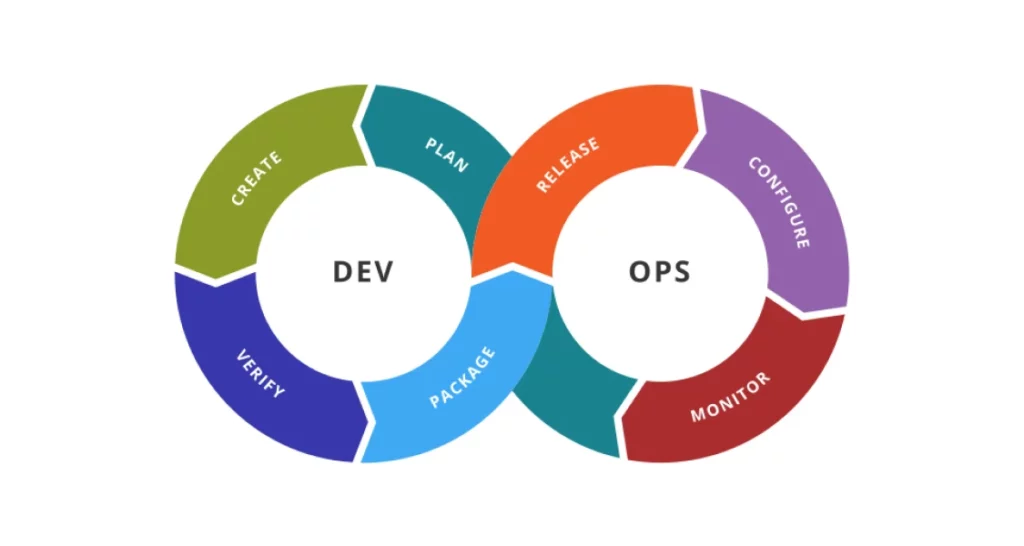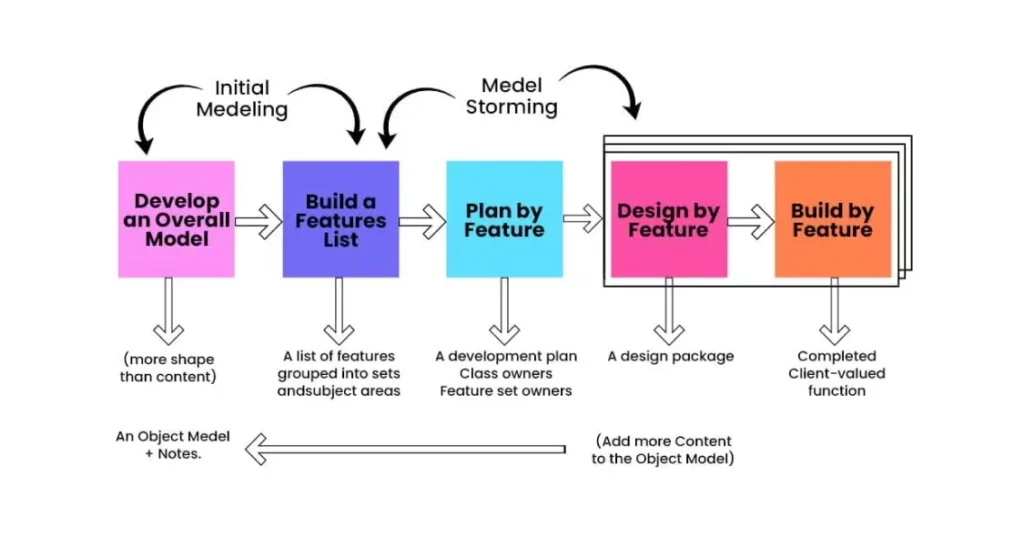Over the decades, software developers have developed numerous methodologies. They all aim to improve the quality of software development projects.
However, finding the perfect fit for every development team remains a challenge. There is no one-size-fits-all approach.
This gave us valuable insights into project management.
Over the decades, software developers have developed numerous methodologies. They all aim to improve the quality of software development projects.
By the end of this article, you will have a deeper understanding of the available software development methodologies.
You will also gain the knowledge to make informed decisions. This will help you select the best software development methodology that aligns with your team and project.
Whether you are a first-time founder or looking to expand your knowledge, grasping these methodologies will undoubtedly contribute to the success of your business.
Continue reading to discover which software development methodology suits your needs best.
What Is Software Development Methodology?
Software development methodologies refers to structured processes applied in project work. It combines design principles and pragmatic reality rooted in the early days of computing.
Over the years, various Software development methodologies have been established. They aim to leverage evolving technologies and resources. These methodologies provide a foundation for developers.
They can collaborate more efficiently as a team. They formalize communication and define how information is shared within the team.
However, the debate persists about which method is superior. The development is that there is no one-size-fits-all solution.
Each methodology comes with its own advantages and disadvantages. Success depends on team structure, project requirements, and goals. It’s not uncommon to use different methods for various projects.
Why follow the software development methodologies?
It’s essential to understand the need for choosing and following a software development methodology throughout a project.
Taking this process for granted introduces numerous risks. It exposes developers to ever-changing customer requests and potential miscommunications.
Without structured guidance, revisions to the software may become frequent. Often, they don’t consider the overall project implications.
This can waste time, money, and effort. It can produce a subpar application that falls short of expectations.
Development teams and customers both benefit from the design of software development methodologies.
Ensuring that discussions are conducted through proper channels involves choosing the correct method. It also provides that we make decisions after thoroughly evaluating all relevant factors.
Using a software development methodologies helps teams minimize inefficiencies. It also helps them provide more accurate delivery timelines.
Let’s discuss software development methodology one by one in detail.
Waterfall Model

The Waterfall Model is a popular method of developing software. It can be compared to building a structure with Lego bricks. It involves progressing through distinct steps or phases. It’s similar to assembling one piece of the Lego set before moving on to the next.
This process unfolds linearly and sequentially. It’s much like a waterfall cascading down levels. Each phase in the Waterfall Model is like a building block. It must be completed thoroughly before advancing to the next one.
This approach ensures a systematic and disciplined way of handling software development. It helps to provide a clear road map for the project. Developers follow a rigid structure. They emphasize the importance of completing each phase before proceeding further.
This simplicity and orderliness contribute to the reliability and predictability of the Waterfall Model. This makes it a foundational methodology in software development.
Sequential Phases
The Evolution of PHP and Why it is Still Relevant?
2. Design: The design phase involves creating detailed plans, architecture, and system specifications based on the gathered requirements.
3. Implementation: Developers execute the design plans, translate them into actual code, and build the software system.
4. Testing: The software undergoes rigorous testing to identify and rectify defects, ensuring it meets the specified requirements.
5. Deployment: Once successfully tested, the software is deployed and delivered to the end-users.
Advantage and disadvantage
Use Cases
1. Small to Medium-sized Projects: Waterfall is suitable for projects with well-understood requirements and limited complexities.
2. Stable Environments: When the project environment is stable, and changes are unlikely, the Waterfall Model can be effective.
3. Regulated Industries: Industries with strict regulatory compliance may benefit from the Waterfall Model’s systematic documentation and clear phases.
Agile Methodology

Agile is a dynamic software development method. It emphasizes flexibility and collaboration to enhance adaptability and customer satisfaction.
It prioritizes individual contributions, effective communication, and practical solutions. It values customer involvement and responsiveness to change over strict processes and tools.
You will also gain the knowledge to make informed decisions. This will help you select the best software development methodology that aligns with your team and project.
In Agile, we divide projects into small, manageable parts called iterations. These iterations follow an iterative and incremental development approach.
People do work in repeated cycles. Each cycle builds on the previous one. At the end of each iteration, we deliver a potentially usable part of the product.
This enables continuous feedback and refinement. This iterative process allows ongoing improvements and adjustments based on real-time insights. It ensures that the final product aligns closely with customer needs and expectations.
Scrum, Kanban, and Extreme Programming (XP) within Agile:
1. Scrum: A popular Agile framework emphasizing teamwork, accountability, and iterative progress through time-boxed intervals called sprints.
2. Kanban: A visual system that manages workflow, emphasizing continuous delivery and efficiency by limiting work in progress.
3. Extreme Programming (XP): Emphasizes customer satisfaction and flexibility through practices like pair programming, continuous integration, and frequent releases.
Advantage and disadvantage
Success Stories (Check Board for Additions)
1. Spotify: Embraced Agile and Scrum, allowing for rapid innovation and adaptation to changing market demands.
2. Amazon: Utilizes Agile practices to enhance development speed and customer responsiveness.
3. Microsoft: Adopted Agile methodologies, particularly Scrum, leading to more efficient development processes.
DevOps

The primary goal is to enhance communication, collaboration, and efficiency between these traditionally separate functions.
DevOps ensures a seamless and integrated workflow by breaking down the project between development and operations.
This collaborative approach emphasizes continuous communication and cooperation.
It fosters a shared responsibility for the success of the software delivery process. With DevOps, teams can streamline processes.
They can automate repetitive tasks and deliver software more rapidly and reliably. This ultimately improves the overall quality and performance of the final product.
Continuous Integration and Continuous Deployment (CI/CD)
1. Continuous Integration (CI): involves regularly merging code changes into a shared repository to detect and address integration issues early in the development process.
2. Continuous Deployment (CD): The automated process of deploying code changes to production environments after passing through the CI pipeline.
Collaboration and Communication: DevOps emphasizes strong collaboration and communication among development, operations, and other stakeholders to streamline processes and improve the overall efficiency of software development.
Advantage and disadvantage
Real-world Examples
1. Amazon Web Services (AWS): Utilizes DevOps practices to enhance scalability, reliability, and agility in their cloud services.
2. Netflix: Implements DevOps to achieve rapid innovation, continuous delivery, and efficient incident response in their streaming platform.
Lean Development

Lean Development in software engineering adopts principles from Lean Manufacturing to streamline processes and maximize efficiency. It focuses on eliminating waste, optimizing workflows, and delivering customer value effectively.
Key principles include:
Reducing Waste, Amplifying Learning, and Creating Teams:
Reducing Waste: Lean Development targets the elimination of unnecessary processes, steps, or resources that do not contribute directly to delivering value to the customer.
This includes minimizing delays, unnecessary documentation, and inefficient practices.
Amplifying Learning: Continuous learning is pivotal in Lean Development. Teams are encouraged to gather feedback, learn from experiences, and adapt quickly to changes.
This iterative learning process contributes to ongoing improvement and ensures the software meets evolving customer needs.
This empowerment enables faster decision-making and problem-solving, leading to more responsive and efficient development processes.
Continuous Improvement: Lean Development strongly emphasizes continuous improvement, encouraging teams to regularly evaluate and refine their processes to enhance efficiency and eliminate inefficiencies.
Creating Powerful Teams: Lean Development emphasizes empowering cross-functional teams. Giving teams autonomy and encouraging collaboration fosters a sense of ownership and accountability.
Application in Software Development
1. Value Stream Mapping: Identifying and optimizing the entire development process to enhance value delivery.
2. Kanban: Visualizing work and limiting work in progress to maintain a smooth and efficient workflow.
3. Just-In-Time (JIT): Delivering work just in time to meet demand, minimizing unnecessary waiting times and resources.
Advantage and disadvantage
Spiral Model

The Spiral Model is a software development approach that blends features from both the waterfall and prototyping methodologies.
It emphasizes iteration and risk analysis. This model guides the development process through a series of iterative cycles. Each cycle represents a phase in the project’s evolution.
The primary key feature of the Spiral Model is its focus on risk management. It encourages developers to assess and address potential risks at every stage.
This ensures that issues are identified and mitigated early in the development process. This iterative approach allows for flexibility and adaptation as the project progresses.
The model involves four main phases: determination of objectives, risk assessment, and mitigation. It also includes development and testing, and an evaluation of the current iteration.
This continuous spiral-like cycle repeats until the final product is ready. The Spiral Model is especially good for large, complex projects. When managing uncertainty and risks throughout the project’s development, we use it.
Iterative Development with Risk Analysis
1. Iterative Development: The Spiral Model follows a cyclical approach where the project evolves through repeated iterations, allowing for the incorporation of new features and improvements.
2. Risk Analysis: Each spiral iteration includes a risk analysis phase, where potential risks are identified, assessed, and strategies are developed to manage or mitigate these risks.
Phases in Spiral Model
1. Planning: Define the project objectives, risks, and constraints.
2. Risk Analysis: Evaluate potential risks and develop strategies to address them.
3. Engineering: Develop, test, and integrate the product based on the planning and risk analysis.
4. Evaluation: Review the results of each iteration to decide whether to proceed to the next spiral.
Advantage and disadvantage
Applicability and Comparison with Other Models
1. Applicability: Suitable for large, complex projects with changing requirements and a need for frequent risk assessment.
2. Comparison: Contrasted with the waterfall model, the Spiral Model accommodates changes more flexibly. It also provides a systematic approach similar to the waterfall model.
Feature-Driven Development (FDD)

1. Domain Object Modeling: FDD places significant importance on creating a clear and comprehensive model of the problem domain. This involves identifying and modelling the key elements (objects) in the system’s domain and their relationships. This model serves as a foundation for understanding and designing the features.
Feature-Driven Development (FDD) is a methodical and iterative approach to software development that revolves around constructing features as its central focus. This methodology incorporates several key concepts to guide its process:
2. Developing by Feature: FDD organizes development around individual features, which are distinct functionalities or capabilities that provide value to the end-users. Teams work on these features in a structured manner, breaking down the overall project into manageable, incremental pieces.
3. Individual Class Ownership: FDD encourages a sense of ownership and responsibility among developers. Each class in the system is assigned to a specific developer who becomes the primary owner of that class. This ownership model enhances accountability and promotes efficient collaboration.
4. Iterative and Incremental Development: FDD follows an iterative and incremental approach where features are developed in short iterations. A potentially shippable product increment is produced at each iteration.
Roles and Responsibilities
1. Chief Architect: Responsible for overall design and architecture.
2. Class Owners: Developers responsible for specific classes or features.
3. Domain Experts: Provide insights into the application domain.
4. Chief Programmer: Oversees the development team and ensures quality.
Advantage and disadvantage
Examples of Successful Implementation
1. United Overseas Bank (UOB): Successfully implemented FDD to enhance the efficiency and quality of their software development projects.
2. Singapore Land Transport Authority (LTA): Applied FDD to improve the development process for their transportation management systems.
Ready to optimize your software development process?
Let’s explore the perfect methodology for your project’s success. Let’s streamline together!
Choosing the Right Methodology in Project
Choosing the right methodology in project management is a critical decision that can significantly impact the success of a software development project.
Various factors must be carefully considered to ensure that the selected methodology aligns with the project’s characteristics and requirements.
Here, we delve into the key factors to consider when making this crucial decision.
Project Size
Project size refers to the scale and scope of the development effort. It can be measured in terms of lines of code, functionality, or team size.
In such cases, methodologies like the waterfall model or the Rational Unified Process (RUP) may be more suitable due to their sequential and phased approach, providing clear milestones and planning.
Complexity
Project complexity involves the intricacy of the system being developed, considering factors such as technical challenges, inter-dependencies, and evolving requirements.
Agile methodologies, such as Scrum or Kanban, are known for their iterative and incremental nature, allowing teams to respond quickly to changes and uncertainties.
Team Expertise
The skill set, experience, and proficiency of the development team members are crucial in determining the methodology that best fits the project.
For example, a team proficient in Agile practices might choose Scrum or XP (Extreme Programming) for their emphasis on collaboration and adaptability.
Customer Involvement
Customer involvement refers to the degree to which end-users or stakeholders participate in the development process, providing feedback and influencing decision-making.
On the other hand, projects with less direct customer interaction may find traditional methodologies like Waterfall more suitable.
Hybrid Approaches
Hybrid methodologies combine elements from different project management approaches to create a customized framework that suits the specific needs of a project.
For instance, a team might use Agile principles for flexibility and customer collaboration while incorporating aspects of the Waterfall model for structured planning and documentation.
There is no one-size-fits-all approach when it comes to selecting a software development methodology.
Project managers and teams must carefully evaluate the project’s size, complexity, team expertise, and customer involvement and consider the benefits of hybrid approaches to select a methodology that aligns with the unique requirements of the project.
Challenges and Solutions in Software Development Methodologies
1. Changing Requirements: Fluid project requirements can pose challenges, especially in methodologies with a fixed planning phase.
2. Communication Breakdown: Inadequate communication can lead to misunderstandings, delays, and errors.
3. Team Collaboration: Ensuring effective collaboration, especially in distributed teams, can be challenging.
4. Resistance to Change: Team members may resist adopting new methodologies due to unfamiliarity or established habits.
5. Resource Allocation: Efficiently managing resources to meet project demands is a common challenge.
6. Unforeseen Risks: Identifying and mitigating risks can be difficult, especially when they emerge unexpectedly.
7. Quality Assurance: Maintaining consistent quality throughout the development process is a perpetual concern.
Want to Automate Your Business Process With a Software Solution?
Zennaxx, a leading software development firm in Canada, has delivered 700+ bespoke solutions spanning various industries.
Strategies for Overcoming Challenges
1. Adaptive Planning: Embrace methodologies that allow for flexibility in response to changing requirements.
2. Enhanced Communication: Foster open and transparent communication channels within the team and with stakeholders.
3. Collaboration Tools: Utilize collaboration tools to facilitate communication and teamwork, especially in distributed environments.
4. Change Management: Implement change management strategies to address resistance and facilitate a smooth transition to new methodologies.
5. Resource Management: Employ effective resource allocation strategies, considering team skills and project requirements.
6. Risk Management: Conduct thorough risk analysis at regular intervals and develop strategies to mitigate potential risks.
7. Quality Assurance Processes: Implement robust quality assurance processes, including testing and code reviews, to maintain high standards.
Continuous Improvement and Adaptation
1. Retrospectives: Regularly conduct retrospectives to reflect on project outcomes, identify areas for improvement, and implement changes.
2. Feedback Loops: Establish feedback loops within the development process to gather insights and make informed adjustments.
3. Training and Development: Invest in ongoing training and development to keep the team updated on the latest methodologies and practices.
4. Adaptive Culture: Foster a culture of continuous improvement, encouraging the team to adapt and evolve in response to challenges and changing requirements.
5. Benchmarking: Compare project outcomes against industry benchmarks and best practices to identify areas for enhancement.
The software development landscape is dynamic, and challenges are inevitable. However, by implementing thoughtful strategies, fostering a culture of continuous improvement, and adapting to the evolving needs of projects, teams can overcome challenges and deliver successful outcomes.
Conclusion
We’ve explored six main software development methodologies, highlighting their strengths and weaknesses. Whether it’s the systematic Waterfall Model, the dynamic Agile Methodology, collaborative DevOps, efficiency-focused Lean Development, risk-aware Spiral Model, or feature-centric Feature-Driven Development (FDD), each serves specific project needs.
Selecting the right methodology for a project requires considering factors like size, complexity, team expertise, and customer involvement.
Addressing challenges through adaptive planning, improved communication, quality assurance, and continuous improvement is key.
Zennaxx Software Development Company puts the right methodology into projects and keeps up with new trends and technology.
Contact us to start the project from scratch and make it a success. Our experienced development team will guide you in choosing the most suitable methodology for your project.





